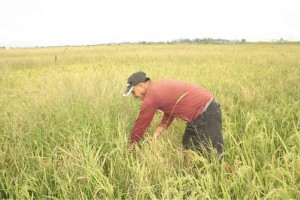The Food and Agriculture Organization (FAO) is rallying donors to raise more funds to help Philippine agriculture rebound, particularly the poor farmers and fishers as well as people who have less access to postdisaster aid.
Officials of the United Nations agency on Monday said the FAO wanted to make sure that, beyond giving, the help being given would work for the longer term.
The FAO is working to raise more than the initial $24 million that it called for through a flash appeal launched last Nov. 12, a few days after Supertyphoon “Yolanda” made landfall.
Jim Hancock, programming officer at the FAO’s Philippine office, said in an interview that proposals for an updated appeal were coming in and being reviewed.
“Within the next two weeks, there will be a formal presentation of that appeal,” Hancock said. “It will include the different sectors that the appeals are going for and the amounts of money.”
He added that the initial amount of $24 million has not been raised fully, but that the funds that did come in have been mobilized and there were “activities on the ground as a result of that appeal.”
Rodrigue Vinet, FAO’s temporary resident representative in the Philippines, said in a press briefing that such activities included the distribution of seeds and other farm inputs in Eastern and Western Visayas.
“This support covered some 18,000 farm households, but that is for the short term,” Vinet said.
Hancock told the Inquirer that while the earlier appeal was based on the urgency to respond to the results of Yolanda’s aftermath, the new and more comprehensive appeal would be more strategic.
He added that the new appeal would include inputs from other international agencies, nongovernment organizations and other UN agencies.
The larger portion of the appeal would be definitely meant for sectors related to food security and agriculture, Hancock said.
“One of the recommendations (to the FAO is that) we complement what the Department of Agriculture does,” he added. “If the DA is focusing on strategic production areas, irrigated areas, high-value crop areas, then there is a tendency to focus on perhaps better-off areas and farmers. So, one of the elements of the appeal is that we need to make sure that vulnerable and hard-to-reach populations (would benefit).”
Hancock said the new appeal was meant to help fill in the “significant gap” between what were currently available resources and what was needed to rehabilitate, reiterating that it would be more strategic and not just about inputs.
“We want to also make sure, for example, if there’s a lot of boats being built or donated, what are the appropriate types of boats (to give to fishermen),” he said. “We want to make sure that the system that is being put up helps.”
“We want to build resilience for the future,” Hancock added. “It’s not just giving, giving, giving. It’s to make sure that the livelihoods start working as quickly as possible.”
In yesterday’s joint briefing with the FAO, the DA told reporters that damage to agriculture amounted to P10.6 billion. This, however, was based on a preliminary assessment as of Nov. 22.
According to data from the National Disaster Risk Reduction and Management Council as of 6 a.m. Monday, the DA has reported that damage from Yolanda has reached P17 billion.
